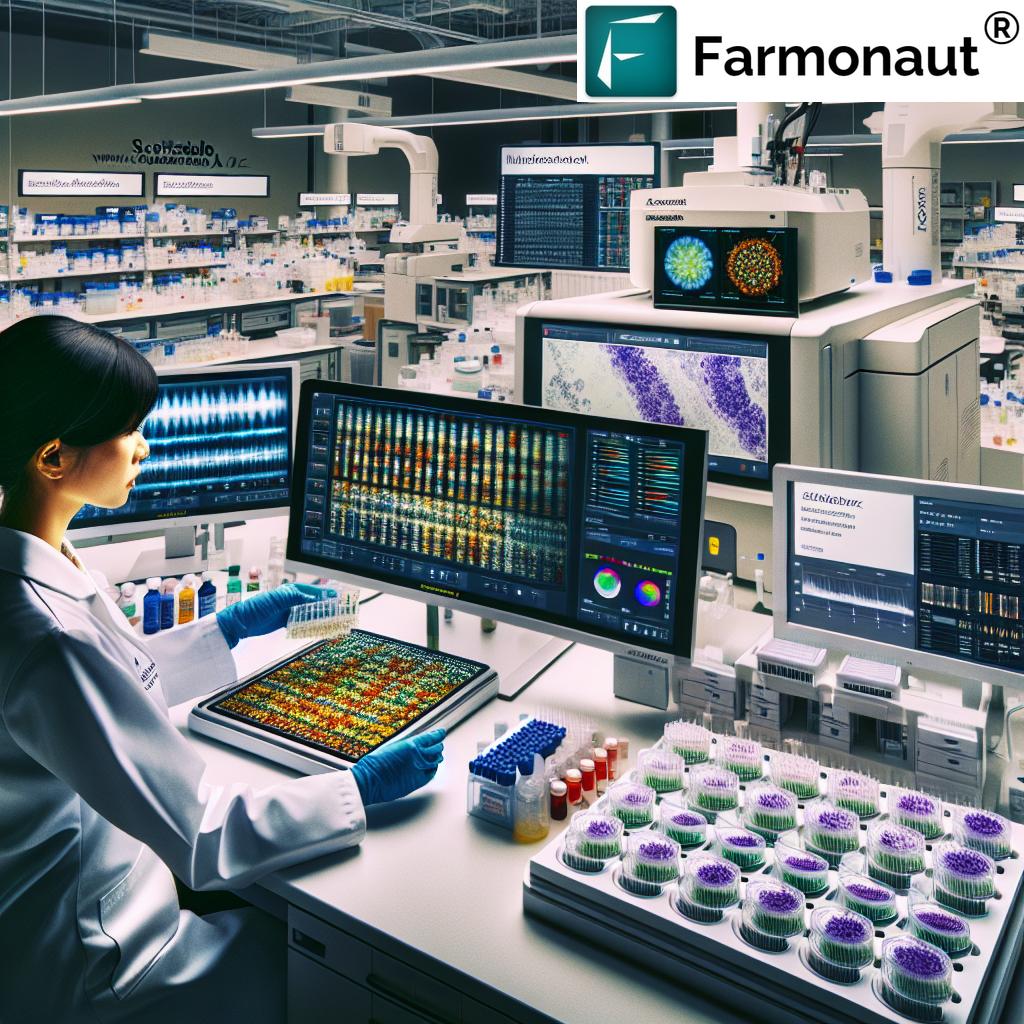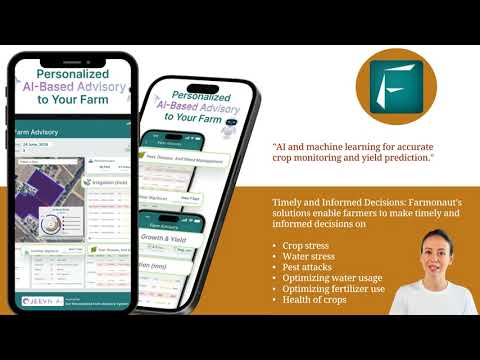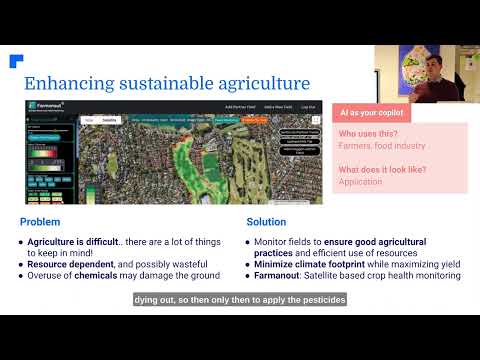Revolutionizing Microbial Testing: Next-Gen Microarray Technology Enhances Agricultural and Food Safety in Scottsdale, AZ
“D3 Array™ technology enables testing of up to 100 microbial targets in a single well, revolutionizing high-throughput analysis.”
In the heart of Scottsdale, AZ, a groundbreaking revolution is taking place in the world of microbial testing. As we delve into the latest advancements in next-generation microarray technology, we’re witnessing a transformation that promises to reshape agriculture, food safety, and clinical testing landscapes. This innovative approach is not just an incremental improvement; it’s a quantum leap forward in how we detect and analyze microbial presence in various environments.
At Farmonaut, we’re excited to explore these cutting-edge developments and their potential impact on the agricultural sector. While our focus remains on satellite-based farm management solutions, we recognize the importance of staying informed about complementary technologies that can enhance overall agricultural productivity and safety.
The Dawn of a New Era in Microbial Testing
The introduction of D3 Array™ technology marks a significant milestone in the field of molecular testing. This innovative platform addresses critical gaps that conventional methods like Real-time PCR and Next-Generation Sequencing have struggled to overcome. Let’s explore how this technology is setting new standards in microbial detection and analysis.

Key Features of D3 Array™ Technology
- High-Throughput Analysis: Capable of testing up to 100 targets in a single-well test
- Rapid Hybridization: Enables faster results compared to traditional methods
- Enhanced SNP Detection: Improved accuracy in identifying genetic variations
- Cost-Effective: Reduces per-analyte testing costs
- Versatile Applications: Suitable for agriculture, food safety, and clinical testing
This technological leap forward is not just about speed and efficiency; it’s about redefining what’s possible in microbial testing. The D3 Array™ technology offers a level of multiplexing that was previously unattainable, opening new doors for researchers and industry professionals alike.
Transforming Agricultural and Food Safety Testing
In the realm of agriculture and food safety, the implications of this new technology are profound. We at Farmonaut understand the critical role that accurate and timely microbial testing plays in ensuring crop health and food safety. While our satellite-based solutions focus on crop monitoring and management, the D3 Array™ technology complements these efforts by providing unprecedented insights into microbial presence at the ground level.
“Next-gen microarray technology in Scottsdale, AZ, offers rapid hybridization reactions and improved SNP detection for enhanced microbial testing.”
Benefits for Agricultural Testing
- Rapid Pathogen Detection: Quickly identify harmful microbes affecting crops
- Soil Health Analysis: Comprehensive testing of beneficial and detrimental soil microorganisms
- Water Quality Monitoring: Ensure irrigation water is free from harmful pathogens
- Crop Disease Management: Early detection and intervention in plant diseases
For those interested in exploring how satellite technology complements these ground-level testing methods, we invite you to check out our Farmonaut web application. Our platform provides valuable insights into crop health and field conditions, which, when combined with advanced microbial testing, can significantly enhance agricultural decision-making.

Revolutionizing Food Safety
In the food safety sector, the D3 Array™ technology is set to become a game-changer. Its ability to rapidly and accurately detect multiple pathogens in a single test is invaluable for ensuring the safety of our food supply.
- Comprehensive Pathogen Screening: Test for multiple foodborne pathogens simultaneously
- Faster Results: Reduce time-to-market for perishable goods
- Enhanced Traceability: Improve tracking of contamination sources
- Cost-Effective Testing: Lower overall testing costs for food producers
While Farmonaut’s focus is on pre-harvest agriculture, we recognize the importance of these advancements in ensuring food safety throughout the supply chain. Our satellite-based crop monitoring can help identify potential issues early, complementing the detailed microbial analysis provided by D3 Array™ technology.
The Science Behind D3 Array™ Technology
To truly appreciate the revolutionary nature of D3 Array™ technology, it’s essential to understand the scientific principles that make it so effective. This next-generation microarray technology builds upon established molecular testing methods while introducing innovative elements that significantly enhance its capabilities.
Dynamic Dimensional Detection (D3)
The core of D3 Array™ technology lies in its unique approach to molecular detection. Unlike traditional microarrays, which often suffer from limitations in probe accessibility and binding efficiency, D3 technology employs a flexible, solution-facing open-array architecture. This design is rich with multiple highly accessible probe binding sites, allowing for more efficient and rapid hybridization reactions.
- Enhanced Probe Accessibility: The open-array structure reduces steric hindrance, allowing target amplicons to move freely and bind more easily.
- Rapid Hybridization: Reactions can occur at room temperature, increasing both speed and affinity.
- Improved SNP Detection: The technology maintains the ability to detect single nucleotide sequence changes with high accuracy.
This innovative approach addresses many of the limitations faced by conventional PCR and sequencing methods, particularly in terms of multiplexing capability and detection speed.
Multiplexing Capabilities
One of the most significant advantages of D3 Array™ technology is its ability to multiplex up to 100 targets in a single-well test. This capability is transformative for several reasons:
- Comprehensive Analysis: Test for a wide range of microbial targets simultaneously, providing a more complete picture of the sample’s microbial profile.
- Time Efficiency: Drastically reduce the time required for comprehensive testing compared to running multiple individual tests.
- Cost-Effectiveness: Lower the overall cost per analyte, making extensive testing more accessible and feasible for laboratories.
- Resource Optimization: Reduce the amount of sample material and reagents required for comprehensive testing.
This level of multiplexing is particularly valuable in agricultural and food safety applications, where the ability to quickly and cost-effectively screen for multiple pathogens or microbial markers can significantly impact decision-making and safety protocols.
Quantitative and Qualitative Results
Another key feature of D3 Array™ technology is its ability to provide both quantitative and qualitative results in a single test. This dual capability offers several advantages:
- Comprehensive Data: Obtain not just the presence/absence of targets but also their relative abundance.
- Improved Decision Making: Quantitative data allows for more nuanced interpretation and action planning.
- Versatility: Suitable for a wide range of applications, from screening to detailed microbial profiling.
For agricultural applications, this means not only detecting the presence of pathogens but also understanding their population levels, which can be crucial for determining appropriate intervention strategies.
Comparative Analysis: D3 Array™ vs. Conventional Methods
To fully appreciate the advancements brought by D3 Array™ technology, it’s essential to compare it with conventional microbial testing methods. This comparison highlights why this new technology is poised to revolutionize the field of molecular testing, especially in agriculture and food safety.
| Features | Conventional PCR | Traditional Sequencing | D3 Array™ Technology |
|---|---|---|---|
| Number of targets per test | Limited (1-5) | High, but time-consuming | Up to 100 |
| Turnaround time | Moderate | Long | Rapid |
| Cost-effectiveness | Moderate | High cost for multiple targets | High (low cost per analyte) |
| Sensitivity | High | Very High | High |
| Sample enrichment requirement | Often required | Often required | Not required |
| Quantitative results | Yes (qPCR) | Limited | Yes |
| Qualitative results | Yes | Yes | Yes |
| SNP detection capability | Limited | High | High |
| Multiplexing capacity | Low | High, but complex | Very High |
| Industry applications | Limited by multiplexing | Broad but costly | Versatile across industries |
As the table illustrates, D3 Array™ technology combines the best aspects of both PCR and sequencing methods while addressing their limitations. Its high multiplexing capacity, rapid turnaround time, and cost-effectiveness make it particularly suited for applications in agriculture and food safety where comprehensive, quick, and affordable testing is crucial.
Impact on Agricultural Practices
The introduction of D3 Array™ technology is set to have a profound impact on agricultural practices. At Farmonaut, we recognize the potential of this technology to complement our satellite-based crop monitoring solutions, offering farmers and agronomists a more comprehensive toolkit for managing crop health and productivity.
Enhanced Crop Disease Management
- Early Detection: Rapidly identify pathogens before visible symptoms appear
- Targeted Treatment: Precise identification allows for more specific and effective interventions
- Reduced Chemical Usage: Early and accurate detection can lead to more judicious use of pesticides
For farmers using Farmonaut’s satellite monitoring services, combining these ground-level insights with our aerial crop health assessments can provide a more complete picture of field conditions. This integrated approach enables more informed decision-making and precise management strategies.

Soil Health Monitoring
D3 Array™ technology offers new possibilities for comprehensive soil health analysis:
- Microbial Profiling: Gain insights into the diversity and balance of soil microorganisms
- Nutrient Cycling: Better understand the microbial processes affecting nutrient availability
- Pathogen Surveillance: Monitor for the presence of soil-borne pathogens
These insights, when combined with Farmonaut’s satellite-based soil moisture and vegetation health monitoring, provide farmers with a holistic view of their field’s health, from the microscopic level to the broader landscape.
Water Quality Management
For irrigation and water management, D3 Array™ technology offers significant benefits:
- Rapid Pathogen Detection: Quickly identify harmful microorganisms in water sources
- Comprehensive Screening: Test for multiple waterborne pathogens simultaneously
- Proactive Management: Address water quality issues before they affect crop health
This technology complements Farmonaut’s efforts in optimizing water usage through satellite-based irrigation scheduling, ensuring not just efficient but also safe water utilization in agriculture.
Revolutionizing Food Safety Practices
While Farmonaut’s primary focus is on pre-harvest agricultural solutions, we recognize the critical importance of food safety throughout the supply chain. The D3 Array™ technology is set to transform food safety practices, offering faster, more comprehensive, and cost-effective testing solutions.
Rapid and Comprehensive Pathogen Screening
- Multi-Pathogen Detection: Test for numerous foodborne pathogens in a single assay
- Reduced Time-to-Market: Faster results mean quicker release of safe products
- Increased Testing Frequency: More affordable testing allows for more regular screenings
These advancements in food safety testing complement the efforts of farmers using Farmonaut’s services to produce high-quality, safe agricultural products.
Enhanced Traceability and Quality Control
D3 Array™ technology enhances traceability and quality control in the food supply chain:
- Precise Contamination Source Identification: Quickly pinpoint the origin of microbial contamination
- Improved Quality Assurance: More comprehensive testing leads to better quality control measures
- Data-Driven Decision Making: Detailed microbial profiles inform production and handling processes
For those interested in exploring how satellite technology can further enhance agricultural traceability and quality control, we invite you to explore our Farmonaut API.
Impact on Food Safety Regulations and Compliance
The advent of D3 Array™ technology is likely to influence food safety regulations and compliance standards:
- More Stringent Testing Requirements: As testing becomes more comprehensive and affordable, regulations may evolve to require more extensive screening
- Faster Response to Outbreaks: Improved detection capabilities can lead to quicker identification and containment of foodborne illness outbreaks
- Data-Driven Policy Making: The wealth of data generated by this technology can inform more effective food safety policies
These developments in food safety testing and regulation underscore the importance of maintaining high standards throughout the agricultural production process, from field to table.
Applications in Clinical and Environmental Testing
While our focus at Farmonaut is primarily on agricultural applications, it’s worth noting the broader impact of D3 Array™ technology in clinical and environmental testing. These applications demonstrate the versatility and potential of this revolutionary technology.
Clinical Testing Advancements
- Rapid Diagnosis: Quick identification of multiple pathogens in clinical samples
- Antibiotic Resistance Screening: Simultaneous detection of pathogens and antibiotic resistance markers
- Personalized Medicine: Comprehensive genetic profiling for tailored treatment approaches
Environmental Monitoring
- Water Quality Assessment: Comprehensive testing of water sources for various contaminants
- Air Quality Monitoring: Detection of airborne pathogens and pollutants
- Ecosystem Health Analysis: Profiling microbial communities in different environments
These applications highlight the potential for D3 Array™ technology to contribute to public health and environmental conservation efforts, areas that indirectly impact agricultural practices and food safety.

Future Prospects and Challenges
As we look to the future of microbial testing in agriculture and food safety, several key trends and challenges emerge:
Emerging Trends
- Integration with AI and Machine Learning: Enhancing data interpretation and predictive capabilities
- Miniaturization and Portability: Development of field-deployable testing devices
- Increased Automation: Streamlining testing processes for higher throughput
Potential Challenges
- Regulatory Adaptation: Ensuring regulations keep pace with technological advancements
- Data Management: Handling and interpreting the vast amounts of data generated
- Training and Adoption: Educating users on new technologies and overcoming resistance to change
At Farmonaut, we’re committed to staying at the forefront of agricultural technology. While our focus remains on satellite-based solutions, we recognize the importance of these complementary technologies in shaping the future of agriculture and food safety.
Conclusion: A New Era in Microbial Testing
The introduction of D3 Array™ technology in Scottsdale, AZ, marks the beginning of a new era in microbial testing. This revolutionary approach addresses longstanding challenges in molecular testing, offering unprecedented multiplexing capabilities, rapid results, and cost-effectiveness. Its impact on agriculture, food safety, and beyond is poised to be transformative.
For the agricultural sector, this technology promises enhanced crop disease management, improved soil health monitoring, and more effective water quality control. In food safety, it offers faster, more comprehensive pathogen screening and improved traceability. These advancements complement the satellite-based agricultural solutions provided by companies like Farmonaut, offering a more holistic approach to modern farming and food production.
As we move forward, the integration of technologies like D3 Array™ with existing agricultural management tools will be crucial in addressing global challenges in food security, safety, and sustainability. At Farmonaut, we’re excited to see how these advancements will synergize with our satellite-based farm management solutions, ultimately benefiting farmers, consumers, and the environment.
For those interested in staying at the forefront of agricultural technology, we encourage you to explore our range of satellite-based solutions. Visit our web application or download our mobile apps for Android and iOS to see how satellite technology is revolutionizing farm management.
FAQ Section
- What is D3 Array™ technology?
D3 Array™ is a next-generation microarray technology that enables high-throughput microbial testing, capable of analyzing up to 100 targets in a single-well test. - How does D3 Array™ technology differ from conventional PCR and sequencing methods?
D3 Array™ offers higher multiplexing capabilities, faster results, and improved cost-effectiveness compared to traditional methods, while maintaining high sensitivity and specificity. - What are the main applications of D3 Array™ technology in agriculture?
Key applications include rapid pathogen detection in crops, comprehensive soil health analysis, and water quality monitoring for irrigation. - How does this technology impact food safety practices?
It enables faster and more comprehensive pathogen screening, enhances traceability in the food supply chain, and allows for more frequent testing due to its cost-effectiveness. - Can D3 Array™ technology be used in conjunction with satellite-based farm management solutions?
Yes, while they serve different purposes, combining ground-level microbial testing with satellite-based crop monitoring can provide a more comprehensive approach to farm management.
Earn With Farmonaut
Earn 20% recurring commission with Farmonaut’s affiliate program by sharing your promo code and helping farmers save 10%. Onboard 10 Elite farmers monthly to earn a minimum of $148,000 annually—start now and grow your income!
For more information about our affiliate program, visit Farmonaut Affiliate Program.
Farmonaut Subscriptions
Explore our subscription options and choose the plan that best fits your needs.
For more information about our API and developer resources, visit our API Developer Docs.




